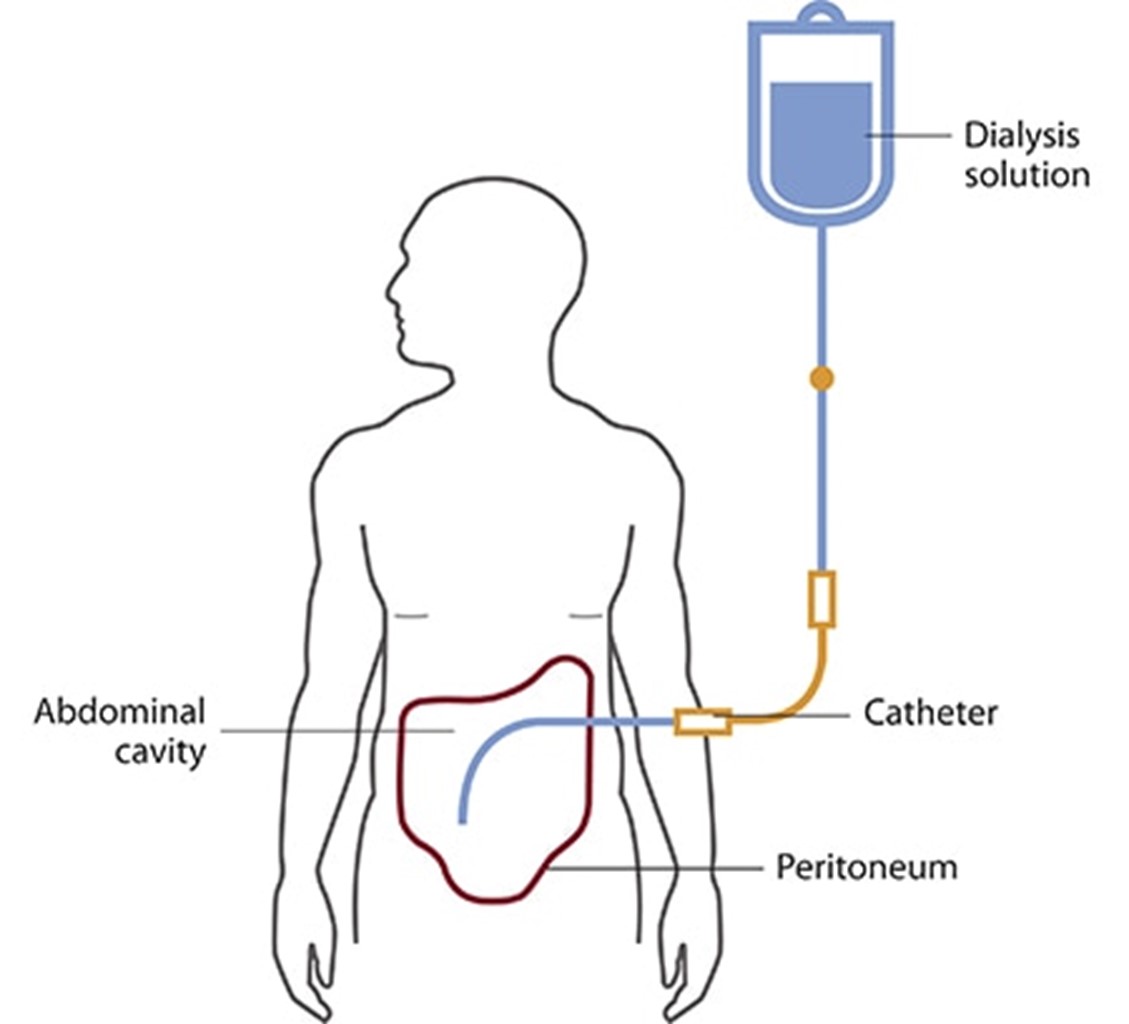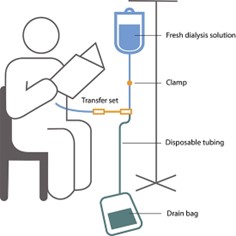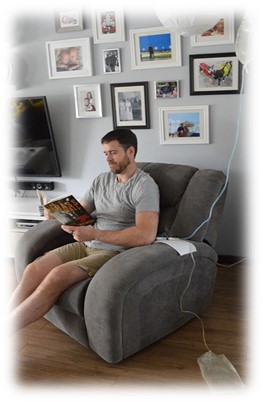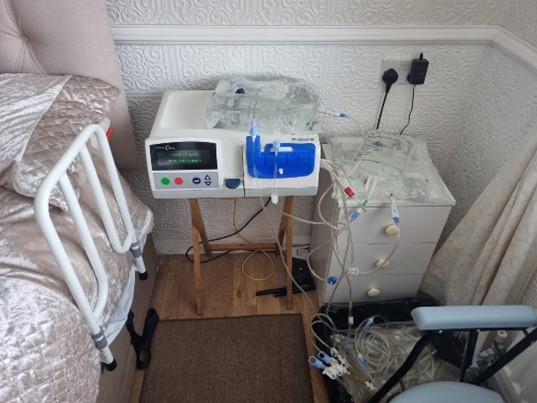Some patients choose to have dialysis at home. Our Home Therapies team will help support patients who have made this decision and show them what types of dialysis is available to them.
Peritoneal Dialysis (PD) is the main type of dialysis we offer for patients who want treatment at home. There are many reasons why you might decide that peritoneal dialysis is right for you and your family. Most patients learn how to perform their treatment independently at home but we can offer ‘assisted’ therapies to anyone that needs extra help but still chooses PD as their preferred dialysis treatment.
We are a growing team of experienced healthcare professionals. Our staff include:
- Dr Rauri Clark (Kidney consultant)
- Catherine Charlton (Home therapies Sister)
- Barbara Schonewald (Home therapies Sister)
- Tracy Hibbert (Home therapies Staff nurse)
How do I prepare for peritoneal dialysis
You will be reviewed by your consultant and advised on the best type of procedure.
Medical insertion (under local anaesthetic) or surgical insertion (under general anaesthetic).
You will need to take laxative therapy to prevent constipation this is important part of you treatment
You will have a home visit from the PD team to talk you through your treatment and to ensure you have suitable space to have treatment at home.
What is peritoneal dialysis and how does it work?
When you decide on your therapy choice the medical team will place a soft tube (catheter) into your abdomen.
Peritoneal dialysis is a treatment for kidney failure that uses the lining of your abdomen (peritoneum), to filter your blood inside your body.
Peritoneal dialysis is performed using dialysis solution—water with salt glucose and other additives this solution flows from a bag through the catheter into your abdomen and is left there for a short while.
Once a few hours have passed the solution is drained out and new solution drained back in the waste sloution is disposed of down a drain.
![]()

![]()
Types of peritoneal dialysis
You can choose your type of peritoneal dialysis treatment to fit around your life style.
- CAPD Continuous Ambulatory Dialysis
- APD Automated Peritoneal Dialysis
- aAPD Assisted Automated Peritoneal Dialysis.
CAPD Continuous Ambulatory Dialysis
This type of exchange is performed manually in a well-lit clean area of your home. The exchange takes approximately 20 to 30 minutes. In between each exchange you can continue with your daily activities. With CAPD, you keep the fluid in your abdomen for 4 hours this gives the fluid time to draw across toxins and fluid. An overnight exchange is performed before going to bed and can stay in your abdomen till the morning.


APD Automated Peritoneal dialysis
APD a machine does the exchanges while you are in bed over night. Your treatment time will be 8 hours durring the 8 hours the cycler ( manchine) fills and empties your abdomen fluid is left in your abdomen for approximatley 1 hour 20 minutes ( Dwell time) before the cyler pulls the solution away.

Assisted Peritoneal dialysis
We have a small team of staff who can Assist with peritoneal dialysis at home with the automated overnight treatment.
Dialysis Training
Learning how to perform your dialysis can be carried out in your own home/ at the hospital or we can offer you training at Baxter Medical Centre (BEC)
BEC is a training facility in Manchester you will be collected from you home and spend the night at BEC and receive intensive training.
What are the possible problems associated with peritoneal dialysis
Infection around the exist site pain swelling discharge ( Catheter site) early detection and antibiotic treatment to treat infection
Infection in the abdomen known as peritonitis. Abdominal pain cloudy fluid seek medical advise and treated with antibiotics.
Peritonitis is normally caused by poor hygiene and technique will need reviewing.
Constipation if you become constipated your treatment will not work due to the position of the catheter, regular laxatives and increased laxatives when required will help.
Your catheter site will look like this:

How will you know your treatment is working?
The nursing team will ask for a 24 hour urine collection fluid samples from your overnight bag and a blood serum this is called an adequacy test. This will give the team data to show you are dialysing well.
The nursing team may request to do a PET test this is a slow test collecting fluid from your abdomen over a 4 hour period this also provides information for the team to ensure your prescribed therapy is correct.







